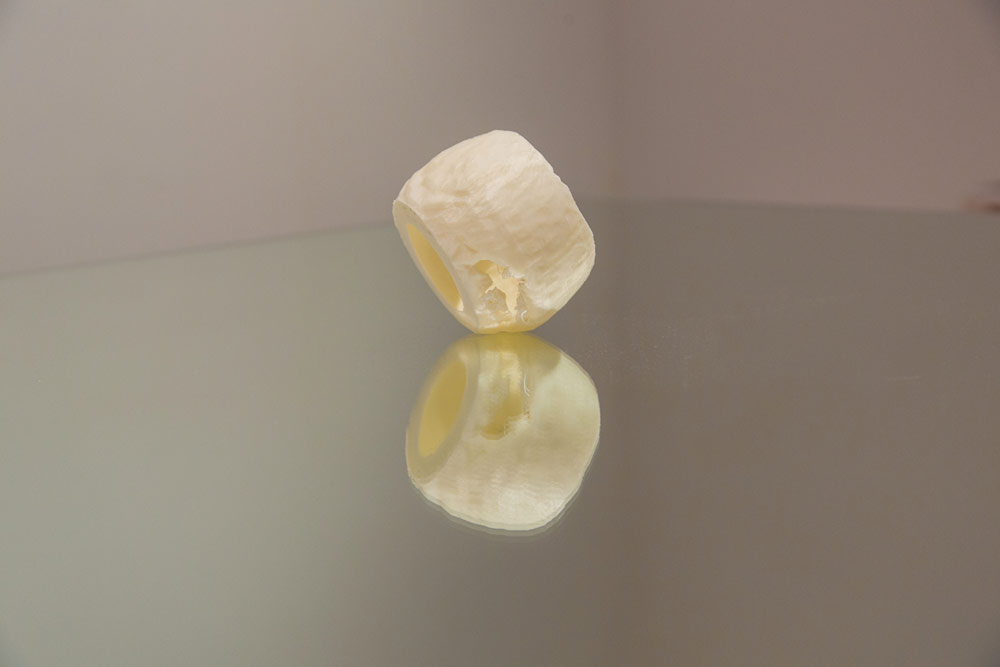There were a few surprises this morning when some new grants for 3-D printing were announced in Toronto.
The first Be3Dimensional Innovation Fund grants have gone to prominent, internationally acclaimed Canadian artists who are primarily known for analog, rather than digital, works: Geoffrey Farmer of Vancouver and Duane Linklater of North Bay.
Through the grant, both Farmer and Linklater will be able to access a $100,000 fund to create new works at Think2Thing, a privately owned 3-D printing atelier in downtown Toronto that was co-founded by photographer Edward Burtynsky.
Linklater—who is Omaskêko Cree and actually already did a small 3-D printing project in 2015 at the Utah Museum of Fine Arts, creating copies there of eight “unauthored” First Nations artifacts—says he is attracted to the possibilities 3-D printing technology has in relation to repatriation of First Nations objects that are currently in museum collections.
“For me, 3-D technology seems really promising in terms of its uses for museums and, in particular, in the exhibition of certain cultural objects,” Linklater tells Canadian Art. “This is where there is an interesting area for me to investigate what is possible, and how I can articulate some of those interests I have in collections—particularly Native American objects in collections.”
One challenge with the upcoming Think2Thing lab, Linklater notes, is that the copies are, in some cases, almost too excellent.
“In the first iteration of this project at Utah, it was the bad copies that I was really interested in,” Linklater explains, “I knew a lot of information would be lost as a part of the [3-D printing] process and I wanted to use this technology as an analogue to what happens when North American [First Nations] objects go through acquisition processes—you lose information as a result.”
But Linklater says that extremely detailed copies could be helpful in the process of bringing First Nations objects out from “being behind glass and behind bars” in museums and returned to “their rightful contexts, their rightful places”—with the tribes and people who made them.
On a different note regarding place and context, Geoffrey Farmer has told the Canadian Press that he plans to integrate 3-D technology in his show at the Venice Biennale next year.
It seems a bit of a departure, in a sense, as Farmer is most acclaimed for works in cut paper, collage and installation.
“As an artist, I’m still trying to understand what it [3-D printing technology] means, and I think it will take us time to understand how it’s going to change our world. But we definitely know it’s changing it,” Farmer says in the Canadian Press article.
“We’ve always been making reproductions of things in the world, so these things aren’t necessarily new,” Farmer continued. “But in the way the technology is able to do it now is different. I’m able to go out into the world and if I see something, I can scan it and bring it back into the studio and work with it within the studio.”
Any resulting grant-funded artworks by Farmer and Linklater will later be exhibited at the National Gallery of Canada and the Ryerson Image Centre.
National Gallery of Canada director Marc Mayer, whose museum helped choose the winning artists, says he is interested in what the project might bring, too.
“We are so pleased to help Canadian artists explore the new medium of 3D printing, which we see as a burgeoning relationship between photography and sculpture following a century and a half relationship between photography and painting,” Mayer said in a release.

 Duane Linklater created 3-D prints of so-called "unauthored" First Nations artifacts—like this copy of a Santa Clara Pot with Bird Design—and displayed them on mirrored tables for a 2015 project at the Utah Museum of Fine Arts. He hopes to extend the technique as part of a new grant. Photo: Utah Museum of Fine Arts.
Duane Linklater created 3-D prints of so-called "unauthored" First Nations artifacts—like this copy of a Santa Clara Pot with Bird Design—and displayed them on mirrored tables for a 2015 project at the Utah Museum of Fine Arts. He hopes to extend the technique as part of a new grant. Photo: Utah Museum of Fine Arts.







